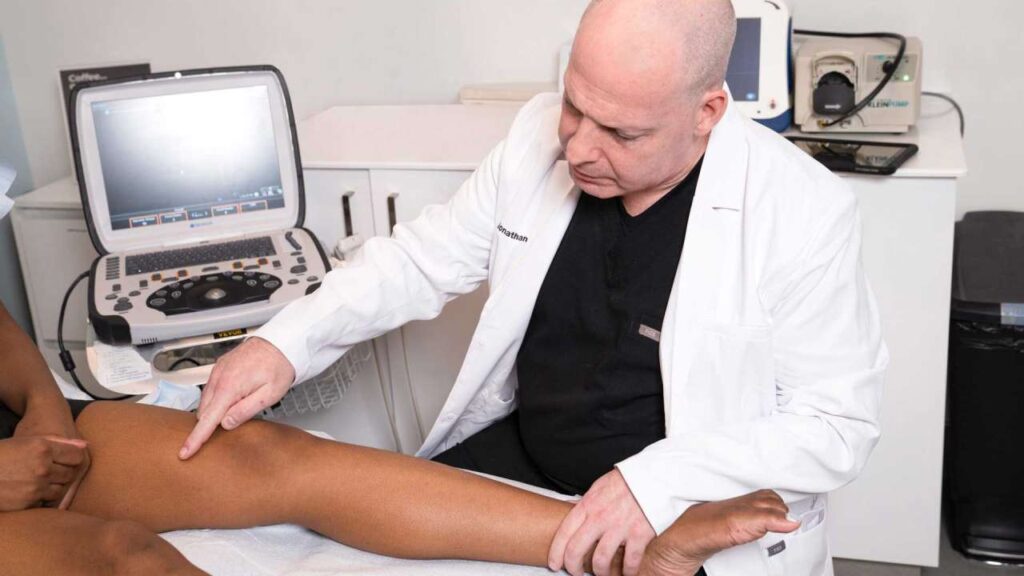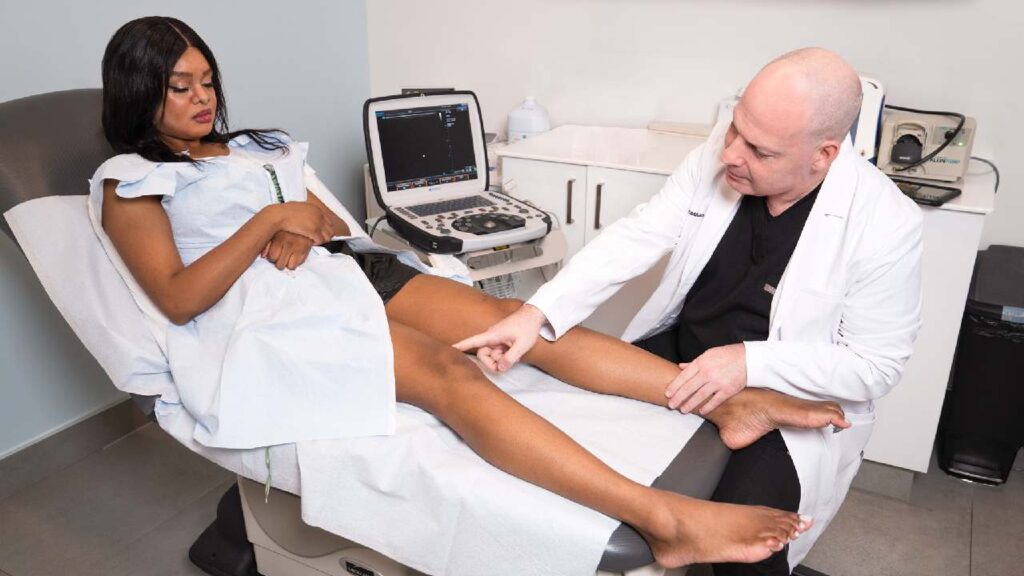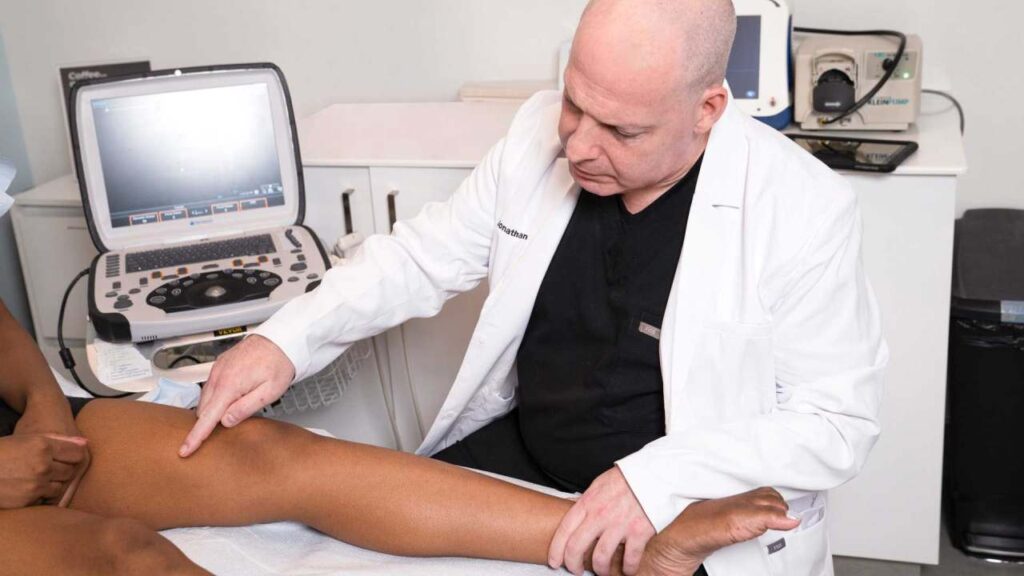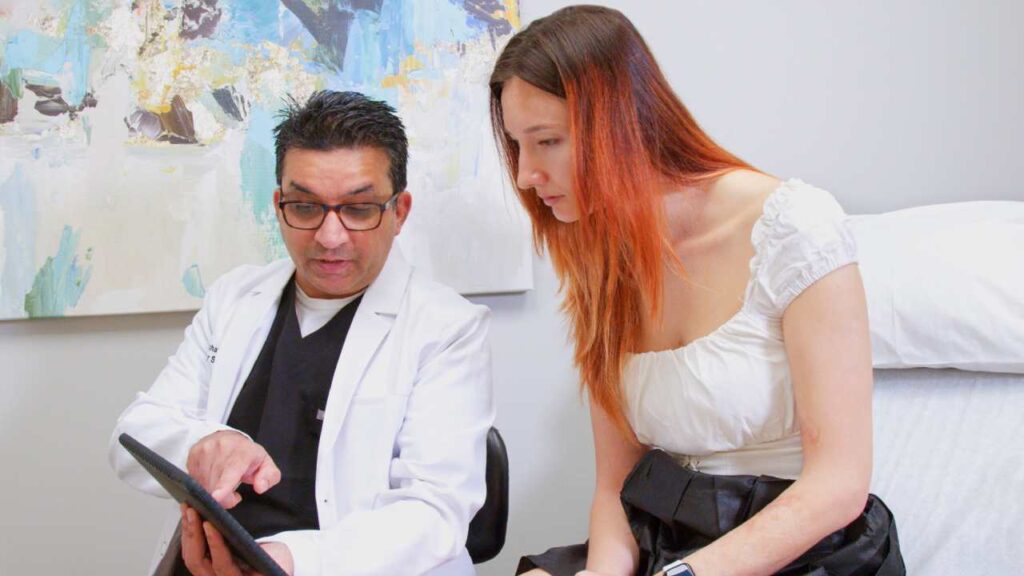If you’re suffering from vein disease and the complications that come with them, it’s time to make an appointment with a reputable varicose vein specialist. You can expect the highest standard of care from vein doctors at Vein Treatment Center New York. Click HERE to book an appointment at our vein center, or keep reading to learn more about the cause and treatment of vein disease.
Venous Insufficiency
Veins throughout the body have one-way valves that ensure blood flows to the heart but does not return to the limbs. Leg veins work extra hard to return blood to the heart since they are fighting gravity. When the valves in the veins of the legs become leaky, gravity takes over and blood flows backwards to pool in veins towards the feet. When this occurs in a single vein, it is referred to as venous reflux; however, when this occurs in multiple veins, it is referred to as venous insufficiency, because the venous system is no longer capable of adequately returning blood to the heart. Chronic Venous Insufficiency is a common disorder that affects one in every four people.
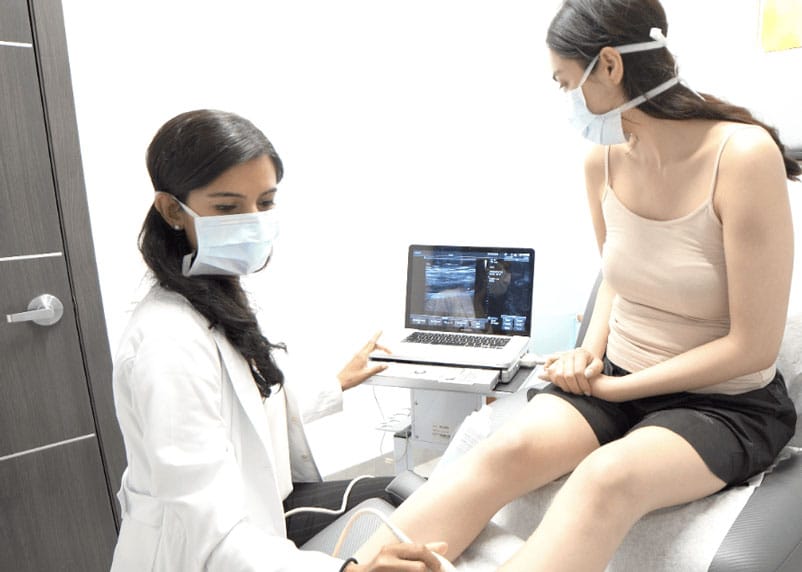
Spider and Varicose Veins
The pressure in the vein increases with time due to fluid buildup, resulting in bulging veins. These bulging veins are classified as spider veins or varicose veins based on their size, appearance, location, and amount of irritation.
Spider veins are extremely thin, measuring less than a millimeter in diameter, and resemble red, blue, or purple spider webs. Clusters can be discovered in the legs or on the face, and they all cause some discomfort.
Varicose veins are significantly larger, measuring more than three millimeters in diameter, and they resemble a knotted rope, with unequal distribution and bulging sections. Varicose veins can be found in the legs, inner thighs, buttocks, and lower pelvic region.
H2: Fatigue and Swelling
Vein disease can also induce heaviness or aching, particularly towards the end of the day when you’ve been active and more blood has a chance to make its way down to the legs. This causes leg fatigue as well as swelling in the feet or ankles. Because there is insufficient circulation to remove the excess lactic acid created by normal activity, your leg muscles may also begin to cramp.
Skin Conditions
If your vein disease is severe, you may develop dark red/brown spots or ulcers on your skin. The skin discolorations are caused by a disorder known as stasis dermatitis, and the staining is caused by red blood cell disintegration. Ulcers are usually open wounds on your shin or calf that don’t heal quickly or easily because there isn’t enough blood flow to supply platelets and other clotting elements to the area.
A third skin condition that could result from vein damage is lipodermatosclerosis, which is scarring of the subcutaneous tissue beneath the skin caused by vein injury and a loss of blood supply in the area. It has the potential to cause long-term damage, hyperpigmentation, and skin rigidity.
Bleeding
When varicose veins are visible and the skin above them is stretched thin, even a minor bump or scratch can cause excessive bleeding. If your varicose veins start bleeding, lie down and lift your legs over your heart, applying slight pressure to ensure blood flows away from your legs and back to your heart.
If the bleeding does not stop within 1-2 minutes, go to the emergency room. Once there, when the bleeding stops, make an appointment with a vein doctor at a vein treatment clinic.
Many people believe these signs and symptoms are simply a result of aging. While this may be true if you see a few spider veins here and there, major areas of the skin covered in spider veins or varicose veins, as well as other associated conditions, are clearly indicative of an underlying vein condition. The good news is that venous problems can be managed!
Depending on your specific condition, the vein doctor may recommend one of three options: VenaSeal, varithena, and radiofrequency ablation are among the techniques that can be used. All of these treatment approaches efficiently close off any troublesome veins with leaking valves that are producing blood flow difficulties. This redirects blood through healthy veins back to the heart, improving overall circulation. They are all relatively painless and take less than a half-hour. You can go home or back to work immediately after the vein treatment clinic procedure because there is no need for anesthesia or recovery time.
It’s important to find a vein doctor who is trained in minimally invasive procedures so that you can be sure that you are receiving the highest standard of vein care.Our vein clinic in NYC is accessible by both Grand Central Station and Penn Station and is close to major landmarks such as the Empire State Building. The Vein Treatment Clinic New York has physicians who are passionate about your well-being and who can consult with you to help you heal. If you are ready to finally get treatment for your vein disease, check out the Vein Treatment Clinic for vein treatment today!
